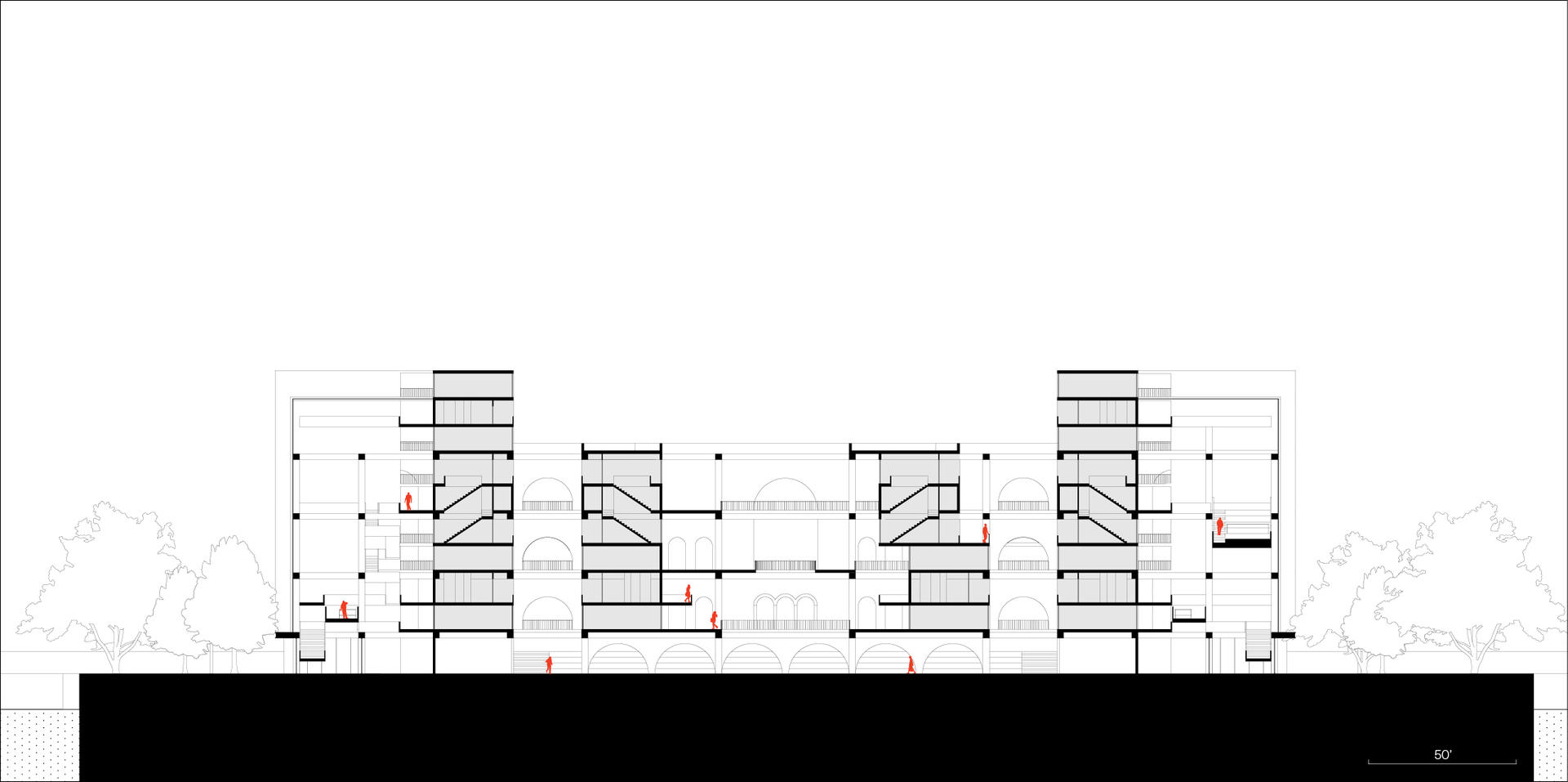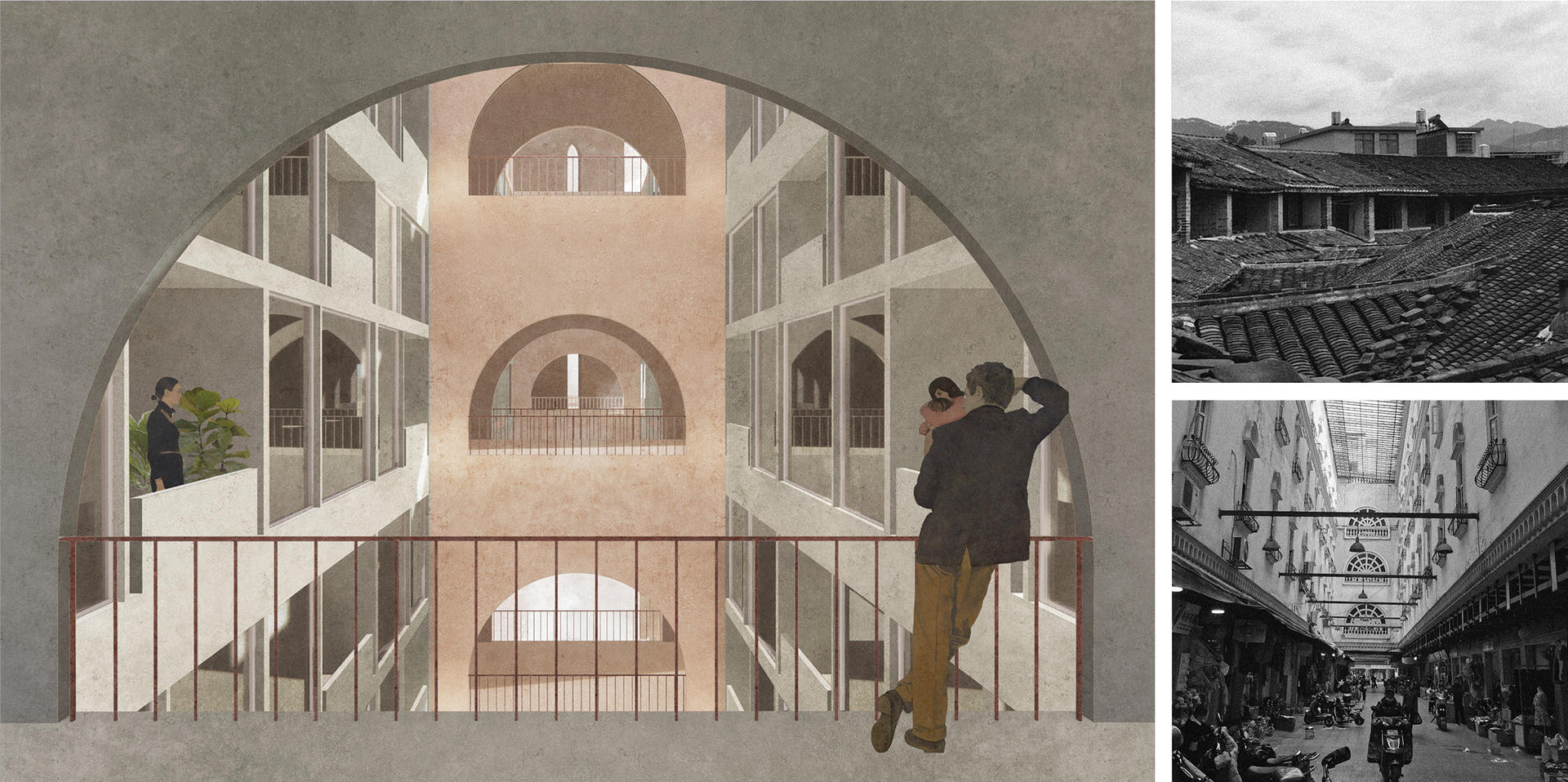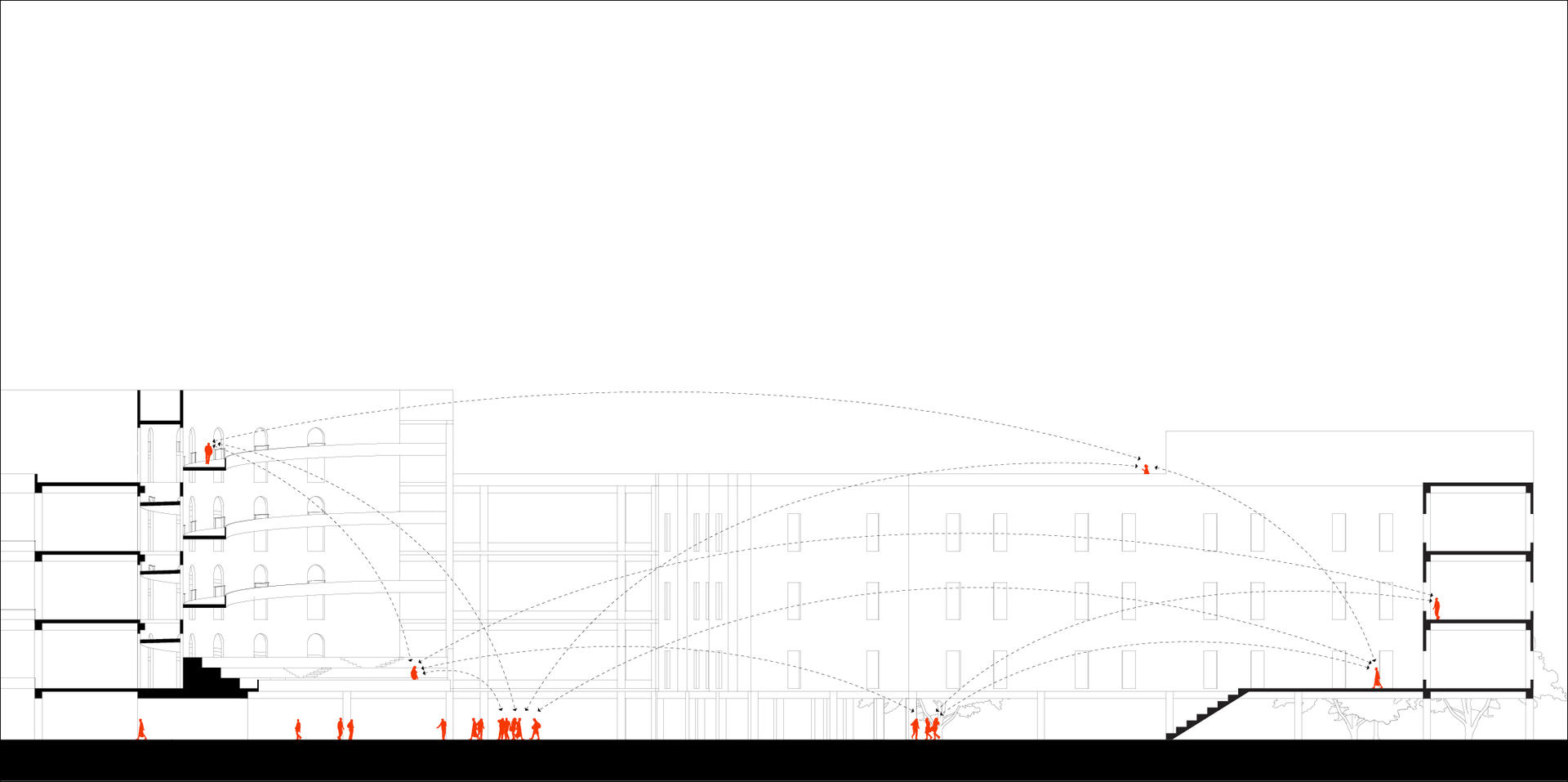ABSTRACT
The history of mankind is migration: while large migrations describe groups and communities, each individual has a unique life history of migration. When moving to a new place, singly or in groups, migrants need self-identification support to adapt to a new environment. As the built environment continuously interacts with human’s everyday life, architecture provides a stable environment, which helps to build individual perceptions in space and social relations. Therefore, architecture migrates with its population and evolves according to context.
Tulou, as a result of historical turbulence and massive migration in China, exemplifies such a phenomenon of migrating architecture. The prototypical courtyard house was brought to the southeast of China by the people of the Central Plains after two waves of migration and gradually evolved to a circular structure for defensive reasons, with an equally distributed egalitarian interior. With migration trends caused by urbanization in recent decades, the residents of Tulou are moving towards urban areas and facing new problems as the result of generations of lower access to social welfare and public services. This forces the question of how the vernacular architecture of Tulou can migrate to the urban context and address these new problems. The new site of this architectural migration is Central Island in Fuzhou, which shares several similarities with Tulou: both are sites hosting waves of migration, though separated by centuries, and both exist in an isolated state from their surroundings. The island used to be a community of British, American, and French immigrants, but is now occupied by an abandoned shopping mall in European colonial style.
Acculturation strategies including integration, assimilation, separation, and marginalization provide a framework for the transformation from Tulou to an urban structure, which considers the different degrees of preservation of one's own identity or integration into the larger society. The vision of these rural migrants trying to become urban citizens prompts Tulou to break its original boundaries and bridge the gap between its population and larger society. This requires making choices and connections between the vernacular features of Tulou, acculturation strategies, and context in the Central Island. In this way, the acculturation of architectural typology itself and individuals will be achieved.
Image

Image

Image

Image

Image

Image

Image

Image

